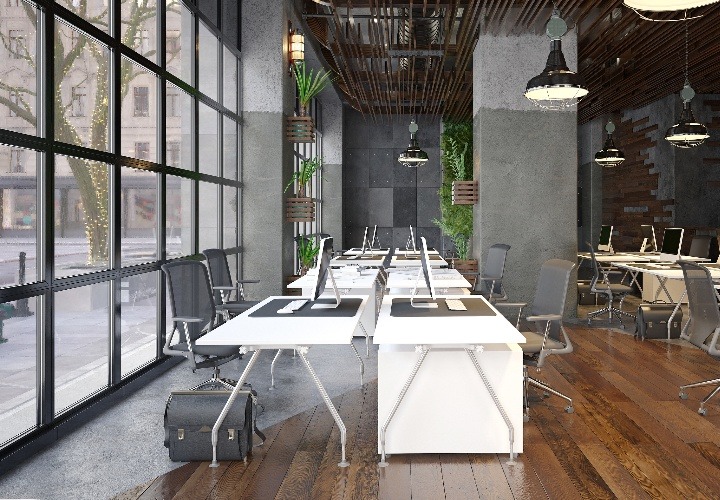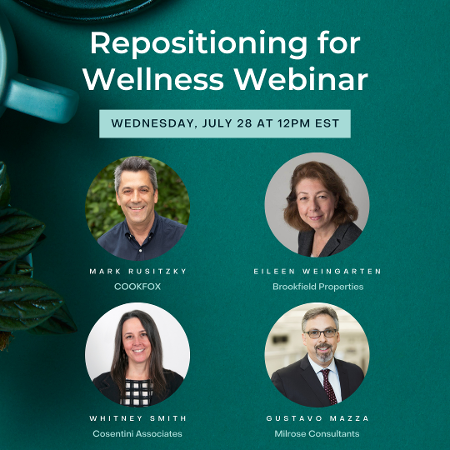With the increased focus on human health in the wake of the COVID-19 pandemic, businesses are beginning to think more creatively about how to promote the wellbeing of their employees. Using a number of different methods — including more sustainable building materials and safer building locations — businesses can design their offices to boost energy efficiency, improve air quality and reduce exposure to toxins.
Healthy buildings offer a range of benefits for both employees and businesses. Employees tend to be happier, which can translate into less absenteeism and greater productivity for the organizations they work for.
Continue reading to learn more about how to make your buildings better for human health and how you can benefit from them.
How to make buildings better for human health
- Use more sustainable building materials: Construction firms can opt for more environmentally sustainable building materials during construction, including materials they use for insulation and lighting. Additionally, embodied carbon — the carbon emissions generated during the manufacture of building materials — can be reduced if firms commit themselves to using materials that are more sustainably sourced.
- Boost energy efficiency: There are numerous methods businesses can adopt to help boost the energy efficiency of their building. This includes investing in energy-efficient window panes that keep heat inside during colder months and keep it out in the warmer ones. Occupants can also invest in smart thermostats to establish tighter control over energy usage.
- Improve air quality: Poor air quality can have a detrimental effect on human health, but designing buildings in a way that promotes better air quality can change this. Equip your buildings with proper ventilation to ensure air is properly filtered and cleaned throughout the day, and use building materials that are non-toxic to help reduce air pollutants. If you're working with an older building, it might be worthwhile to invest in replacing leftover toxic material like asbestos.
- Choose a safer location: Where you build matters. Many buildings in the United States are constructed on contaminated or polluted land, where toxic materials were not properly handled or disposed of. Occupants living on these sites can face severe health consequences, but working with the right public officials can ensure that you know everything about the land you're building on before you start.
Benefits of healthy buildings
- Reduce carbon emissions: The construction industry contributes roughly 40% of the world's annual greenhouse gas emissions every year, a problem that can last decades or longer when buildings aren't eco-friendly. The use of more sustainable materials and building practices during construction could substantially reduce the industry's carbon footprint.
- Reduce costs: Businesses lose thousands of dollars a year to inefficient windows, non-insulated walls and other poor structural designs that encourage wasteful energy consumption. Designing buildings in a way that boosts energy efficiency can help drive down your annual costs.
- Boost cognitive function: One study found that workers in green buildings showed a 26.4% improvement on cognitive tests, which tested cognitive abilities across nine different criteria, including strategy, task orientation and crisis response. Improved cognition translates directly into greater productivity and efficiency among workers.
- Improve sleep: The same study showed that employees in healthy buildings had an average of 6.4% better quality sleep every night. Sleep has long been shown to be a major driver of overall human health, and a well-rested workforce makes each individual more emotionally stable, productive at work and happier on the job.
- Reduce absenteeism: It's simple. Healthy employees take fewer sick days. Healthy buildings not only improve employee performance on the job, they also help ensure they're not losing precious time to illness. Fewer sick days means you get employees who are more efficient across the entire year.
Understanding the certification types: WELL vs Fitwel
WELL Building Standard
The WELL building standard provides guidelines for those who want to design their buildings with employee well-being in mind. WELL focuses on a series of core concepts aimed at improving overall health, including:
- Better air quality
- Improved water quality
- Support fruit and vegetable availability
- Greater light exposure
- Promote physical activity
- Ensure temperature comfort
- Mitigate noise pollution
- Minimize exposure to toxic building materials
- Support mental health
- Engage all socioeconomic backgrounds
WELL accompanies each of these components with a series of actionable initiatives that businesses deploy to actually realize these objectives. There are currently 29,355 WELL-certified projects covering more than 2.62 billion square feet. These are located across almost 100 countries.
Fitwell Standards
The Fitwell Standard was released by the U.S. Centers for Disease Control and Prevention and the General Services Administration in 2017 to help promote health and wellness in office spaces. Fitwell provides businesses with scorecards that give them a quantifiable figure that measures how well their building promotes human health.
Fitwell also provides structural recommendations on a more granular level. These include building in a location that offers better access to public transportation, building outdoor spaces that encourage physical activity, and ensuring easy access to potable water supplies to encourage hydration.
Post-Pandemic Building Standards
Both WELL and Fitwell released their own rating systems in response to the COVID-19 pandemic. WELL released the WELL Health-Safety Rating (WELL HSR) and Fitwel released the Viral Response Module. To learn more about the requirements and benefits of these certification programs, check out a recording of a webinar Milrose recently hosted called Repositioning for Wellness: Integrating Health into Commercial and Residential Properties.
During this webinar, Milrose's Gustavo Mazza moderated a panel of industry experts including Mark Rusitzky (COOKFOX), Eileen Weingarten (Brookfield Properties) and Whitney Smith (Cosentini Associates) in an important discussion about the newest trends and strategies being implemented to design, build, and maintain spaces that meet the health and wellness needs of today's tenants.
As public health has become a greater priority for businesses, healthy buildings have taken center stage as one of the main methods for boosting employee wellbeing. Both businesses and their employees stand to make significant gains by committing themselves to creating a healthier workspace, and the longer term impact on the environment could be substantial.








